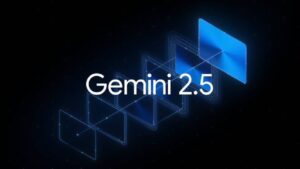Introducing Llama 3.1: A Free, Powerful, and Risky AI Model from Meta

Meta’s Free AI Offering: Llama 3.1
Introduction to Llama 3.1
Meta, the tech company led by Mark Zuckerberg, has launched an impressive new AI model called Llama 3.1, and the remarkable part is that it is available for free. This model is recognized as one of the most capable large language models in the world. While the exact costs behind its development remain undisclosed, Zuckerberg has indicated that Meta is investing substantial amounts in artificial intelligence, amounting to billions of dollars.
What Makes Llama 3.1 Stand Out?
Llama 3.1 is considered to be as intelligent and functional as the best commercially available AI products from companies like OpenAI, Google, and Anthropic. In various benchmarks that evaluate AI capabilities, Meta claims that Llama 3.1 stands out as the leading AI model currently available.
Key Features of Llama 3.1
Size and Complexity: The new model contains a staggering 405 billion parameters, making it significantly more intricate than its predecessors. Earlier versions of Llama 3 were also released, with one having 70 billion parameters and another with just 8 billion.
Cloud Integration: Given its immense size, Llama 3.1 cannot be operated on typical personal computers. However, Meta ensures that developers can access the AI through various cloud providers like AWS, Google Cloud, Groq, and Databricks, easing the setup process.
- Safety Measures: Meta has designed Llama 3.1 with safeguards that help it avoid generating harmful content. While these safety features are preset, developers have the option to modify the model for different uses.
The Open Source Debate
Meta’s approach aims to challenge the traditional closed systems that many tech companies prefer. In an open letter accompanying the model’s release, Zuckerberg drew parallels between Llama and the Linux operating system. In the late ’90s and early 2000s, Linux revolutionized software by offering an accessible, open-source alternative to proprietary systems. Today, Linux is integral to cloud computing and powers the Android operating system.
Zuckerberg believes that AI will evolve in a similar fashion, suggesting that open-source models like Llama can rapidly gain ground against their closed counterparts. He points out that while several companies currently offer leading closed models, the gap is narrowing rapidly as open-source technologies gain traction.
Self-Interest and Strategic Positioning
Despite the altruistic nature of releasing Llama 3.1 for free, there are notable strategic interests at play. Previous versions of Llama have enabled Meta to carve out a significant influence among AI researchers, developers, and emerging startups. However, it’s essential to acknowledge that Llama 3.1 is not entirely open source; Meta enforces restrictions that limit how the model can be used in commercial applications.
Public Reactions and Future Implications
Experts in the field are excited about Llama 3.1’s potential. Percy Liang, a professor at Stanford University, mentions that if developers find Llama 3.1 to be on par with OpenAI’s offerings, a shift in usage patterns could occur, drawing more developers to Meta’s model. This transition could impact the broader AI landscape, challenging established players and altering market dynamics.
Accessing Llama 3.1
For developers interested in experimenting with Llama 3.1, the model can be accessed through Meta’s website at Meta.ai. The company also emphasizes that numerous cloud services will offer hosting solutions, allowing for customizable applications of the new AI model.
Overall, Meta’s release of Llama 3.1 not only showcases its capabilities but also ignites discussions around the future of AI development, the importance of open-source technologies, and the evolving relationship between tech giants and the AI community.






